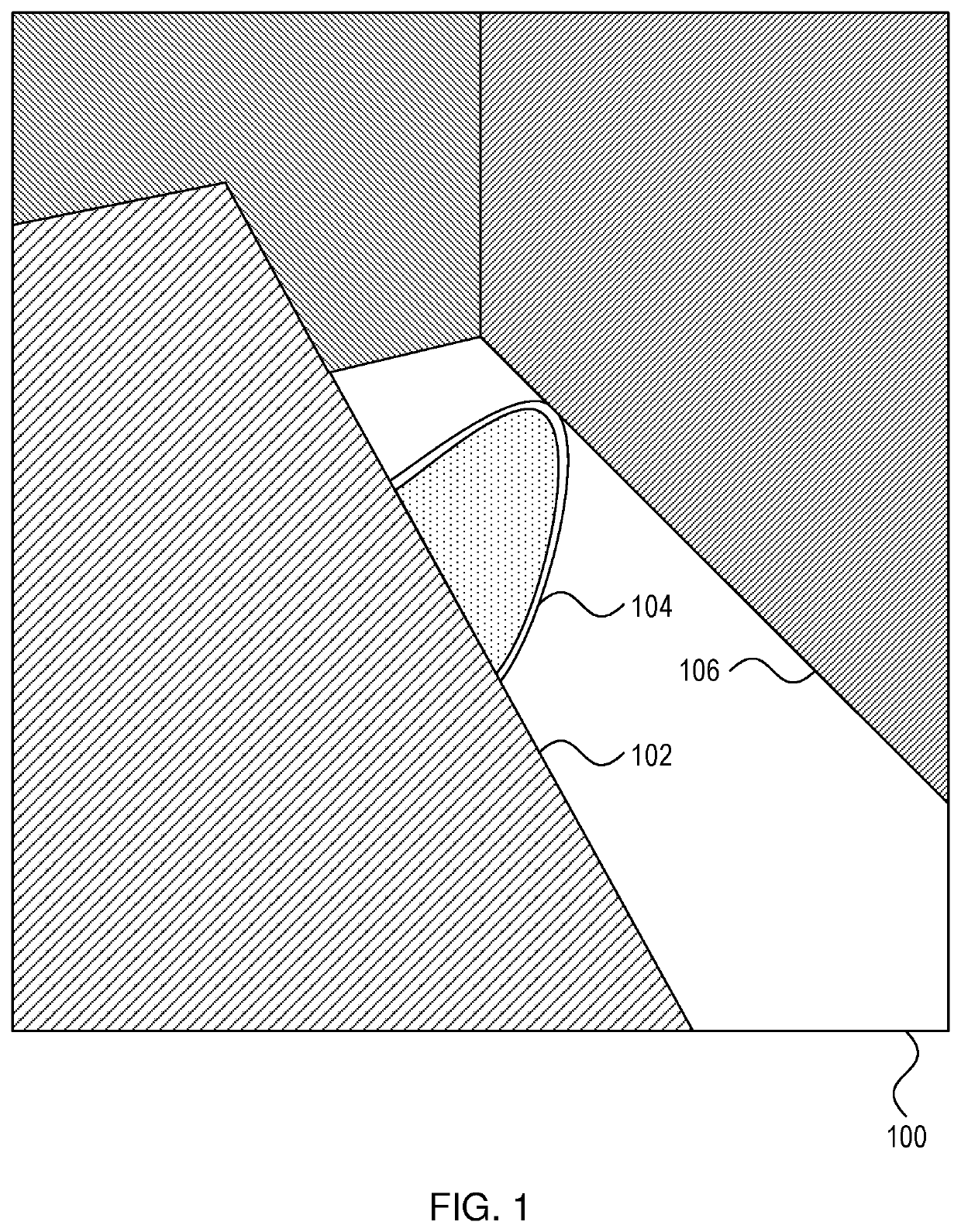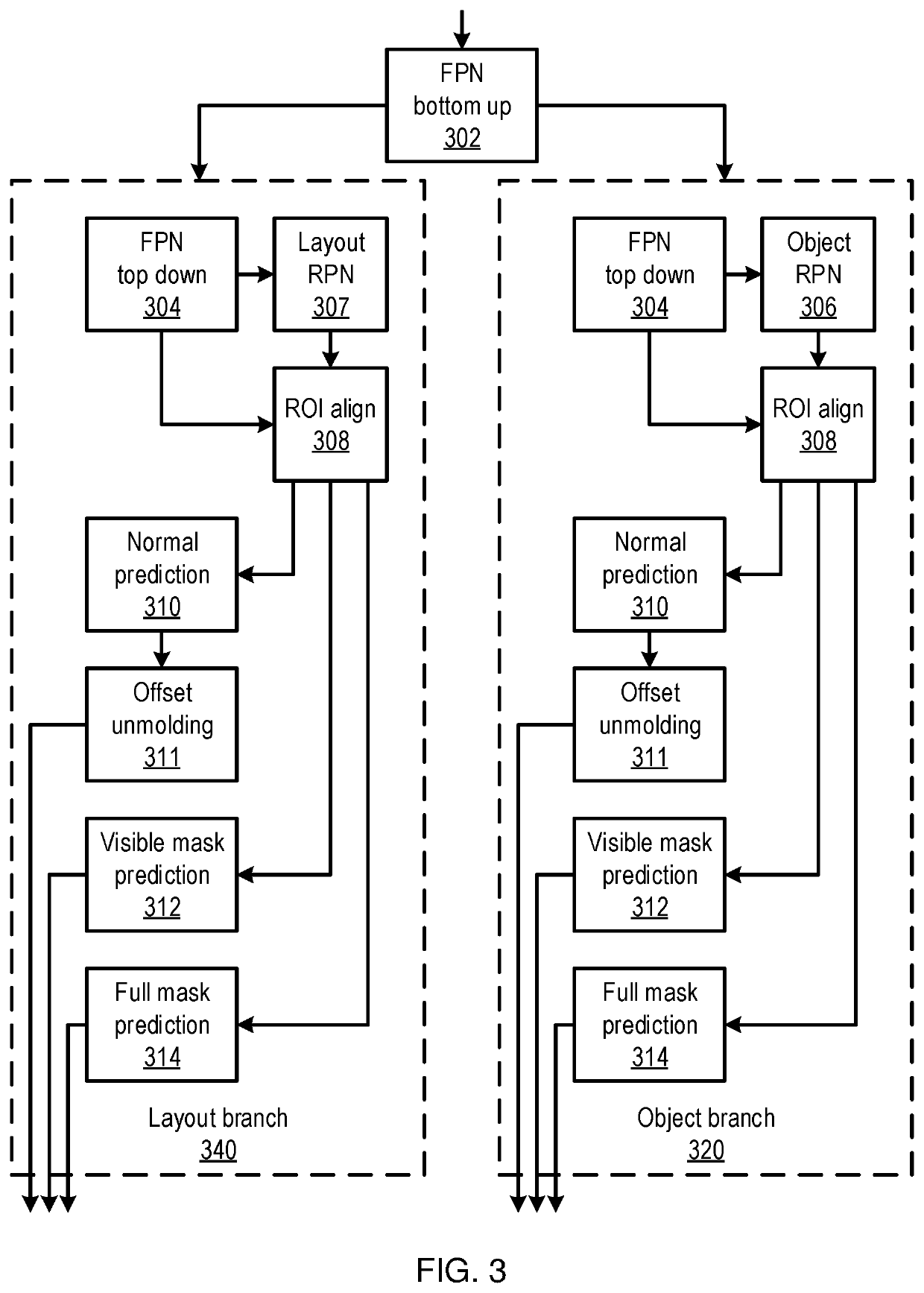Occlusion-aware indoor scene analysis
- Summary
- Abstract
- Description
- Claims
- Application Information
AI Technical Summary
Benefits of technology
Problems solved by technology
Method used
Image
Examples
Embodiment Construction
[0015]Scenes may be represented as a set of planes, inferred from a single input image. Using the distinction in size and shape of planes on foreground objects, like chairs or tables, and background objects, like walls, these groups of objects may be predicted separately to lower output space variations. Furthermore, if multi-view inputs are available, then planes may be warped from one view to another to obtain a training signal.
[0016]A machine learning model, for example using a neural network model that infers a full scene representation, with reasoning about hidden areas, may be trained using data that includes a ground truth about the geometry and semantics of occluded areas. To obtain such training data, existing image datasets may be processed to provide approximate, but reliable, ground truth information for occlusion reasoning.
[0017]Occlusion detection is useful in a variety of applications, such as robot navigation and augmented reality. By improving the detection and anal...
PUM
 Login to View More
Login to View More Abstract
Description
Claims
Application Information
 Login to View More
Login to View More - R&D
- Intellectual Property
- Life Sciences
- Materials
- Tech Scout
- Unparalleled Data Quality
- Higher Quality Content
- 60% Fewer Hallucinations
Browse by: Latest US Patents, China's latest patents, Technical Efficacy Thesaurus, Application Domain, Technology Topic, Popular Technical Reports.
© 2025 PatSnap. All rights reserved.Legal|Privacy policy|Modern Slavery Act Transparency Statement|Sitemap|About US| Contact US: help@patsnap.com



